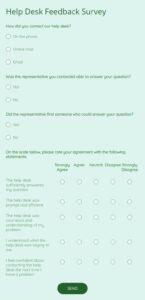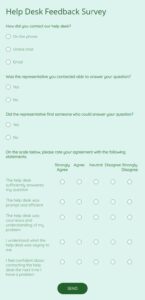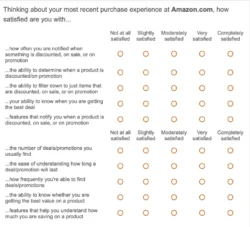Ever wondered how your help desk is really performing beyond just ticket resolution rates? While metrics are great, they don’t always tell the full story of your customers’ experience. That’s where truly understanding their perspective comes into play. Listening to your customers isn’t just a nice-to-have; it’s a fundamental step towards building a truly exceptional service experience that keeps them coming back.
Imagine being able to pinpoint exactly what makes your customers happy or, more importantly, what causes them frustration. Gathering this valuable insight doesn’t have to be a complicated ordeal. With the right tools and a well-designed approach, you can systematically collect actionable feedback that directly improves your support operations. This is precisely where a thoughtfully constructed survey can become your best friend.
Why Your Help Desk Needs a Feedback Survey
In today’s competitive landscape, customer satisfaction is often the differentiating factor. A help desk isn’t just about fixing problems; it’s about delivering an experience. When customers interact with your support team, they form an impression that impacts their overall perception of your brand. Without a direct line to their thoughts and feelings post-interaction, you’re essentially flying blind, hoping for the best.
Implementing a regular feedback mechanism allows you to uncover invaluable insights. You can identify recurring issues that might not be obvious from internal metrics, pinpoint areas where agents excel, and even discover new training opportunities. This proactive approach helps you move from reactive problem-solving to strategic service improvement, ultimately leading to happier customers and a more efficient team.
Think about it: when your team knows their efforts are being measured not just by speed but by customer sentiment, it often motivates them to go the extra mile. Feedback provides a clear roadmap for individual agent development and helps management understand where to allocate resources for maximum impact. It fosters a culture of continuous improvement within your support operations.
Beyond identifying weaknesses, feedback surveys also highlight strengths. Knowing what your customers love about your service allows you to replicate those positive experiences and even market them. It empowers you to celebrate your successes and build on them, creating a virtuous cycle of positive customer interactions and improved service delivery. A well-crafted help desk feedback survey template can be the cornerstone of this process.
Key Areas to Cover in Your Survey
To ensure your survey captures comprehensive insights, consider including questions that touch upon various aspects of the customer service experience. Here are some critical areas you’ll want to explore:
- Overall Satisfaction: How satisfied was the customer with the entire support experience? (e.g., using a Net Promoter Score NPS or Customer Satisfaction CSAT scale).
- Agent Performance: Was the agent knowledgeable, polite, and helpful? Did they understand the issue?
- Resolution Effectiveness: Was the issue resolved completely and efficiently? Did the customer need to contact support multiple times for the same issue?
- Timeliness: How quickly was their request acknowledged and resolved? Was the wait time acceptable?
- Communication Clarity: Was the communication clear, concise, and easy to understand throughout the interaction?
- Ease of Use: How easy was it to get in touch with the help desk? Was the process straightforward?
- Specific Feedback/Comments: An open-ended question for customers to provide additional details or suggestions. This is often where the most valuable qualitative insights emerge.
Crafting an Effective Help Desk Feedback Survey Template
Designing a survey isn’t just about throwing a few questions together; it’s about thoughtful construction to ensure you get meaningful, actionable data. The goal is to make it easy for customers to respond while providing you with the depth of insight you need. Start by defining your objectives: what exactly do you want to learn? Is it overall satisfaction, agent performance, or perhaps the efficiency of your self-service options?
Consider the types of questions you’ll use. Rating scales (1-5, strongly agree to strongly disagree) are excellent for quantitative data, allowing for easy comparison and trend tracking. Multiple-choice questions can help categorize common issues or preferences. However, don’t underestimate the power of open-ended questions. While they require more effort to analyze, they often provide the rich, qualitative context that numerical scores can’t. These insights can highlight unforeseen pain points or innovative suggestions directly from your users.
Timing is also crucial. Sending a survey immediately after an interaction, while the experience is fresh in the customer’s mind, typically yields the highest response rates and most accurate feedback. However, for issues that might take longer to fully resolve or assess, a follow-up survey a few days later might be more appropriate. Keep your surveys concise; respect your customers’ time. A lengthy survey is less likely to be completed, leading to lower response rates and potentially skewed data.
Once you’ve collected the data, the real work begins: analysis and action. Don’t let your valuable feedback sit unread. Look for trends, positive and negative. Identify specific areas for improvement and celebrate successes. Share feedback with your team, both individually and collectively, to foster learning and acknowledge their hard work. Use the insights to refine processes, update training materials, and even adjust your service offerings. This continuous loop of feedback, analysis, and action is what transforms raw data into tangible improvements.
By systematically gathering and acting upon customer insights, you empower your help desk to evolve and consistently meet, or even exceed, customer expectations. It’s about more than just closing tickets; it’s about building lasting relationships and a reputation for excellent service. Every piece of feedback is an opportunity to strengthen your customer relationships and refine your operational excellence.
Embracing a culture of feedback ensures that your support operations remain agile and customer-centric. Regularly reviewing and implementing changes based on what your users tell you will not only boost satisfaction but also significantly contribute to your overall business success. It’s an ongoing journey of listening, learning, and continuously improving, one interaction at a time.



